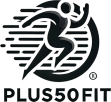I recently wrapped up a 120-minute treadmill run that was, by all accounts, a success. I felt energized, fueled, and strong from start to finish. But something curious lingered in my post-run reflection: while my heart rate data suggested I was working above Zone 2 for extended stretches, I was able to comfortably breathe through my nose the entire time.
Nasal breathing is often used as a barometer for aerobic efficiency. The theory goes: if you can breathe through your nose without gasping, you’re likely in your aerobic zone. But my watch was telling a different story. And that got me wondering—are my heart rate zones accurate?
A Little Background
I determined my current heart rate zones using a time trial rather than relying on the typical age-based formulas found on most fitness platforms. While those equations can be a reasonable starting point, they don’t account for individual differences in fitness level, training history, or overall health.
At 66, I’ve been running consistently since 2018. I try to train smart and continue building my aerobic capacity, all while working to better understand how my body responds. I also wear a chest strap heart rate monitor to ensure greater accuracy.
Which is why I found this recent data discrepancy so fascinating.
The Nose Knows?
For the full 120 minutes, I breathed exclusively through my nose. No huffing, no puffing, just steady nasal breathing while running to my trusty Drum Buddy backing track, gradually increasing from 145 to 155 BPM.
The effort felt comfortably challenging but never taxing. Yet my heart rate data showed that I often drifted into Zone 3 for long stretches. So what gives?
Possible Explanations:
- My HR Zones May Be Off – I may need a lab test or lactate threshold test in the future to dial things in.
- HR Drift – Over the course of a long run, heart rate naturally rises. It’s not always reflective of increasing effort. External factors like dehydration, heat, and cumulative fatigue can skew readings.
- Improved Aerobic Efficiency – Maybe my training is working. Maybe I’m more aerobically efficient than I was six months ago.
- Nasal Breathing Isn’t Infallible – It’s a helpful cue, but not a flawless metric.
So, Are My Zones Wrong?
Maybe. Maybe not.
What I do know is that I felt strong and steady, that my recovery was smooth, and that my performance didn’t falter. That counts for something.
A Note to Fellow Runners:
I’m not a coach. I’m not a physiologist. I’m just a runner who embraces both the science and the self. I value the guidance of experts, but I also believe in the power of experimentation and personal exploration. I don’t claim to have all the answers, but I’m open to asking the questions.
And as always, I’m learning. One nose-breath at a time.
